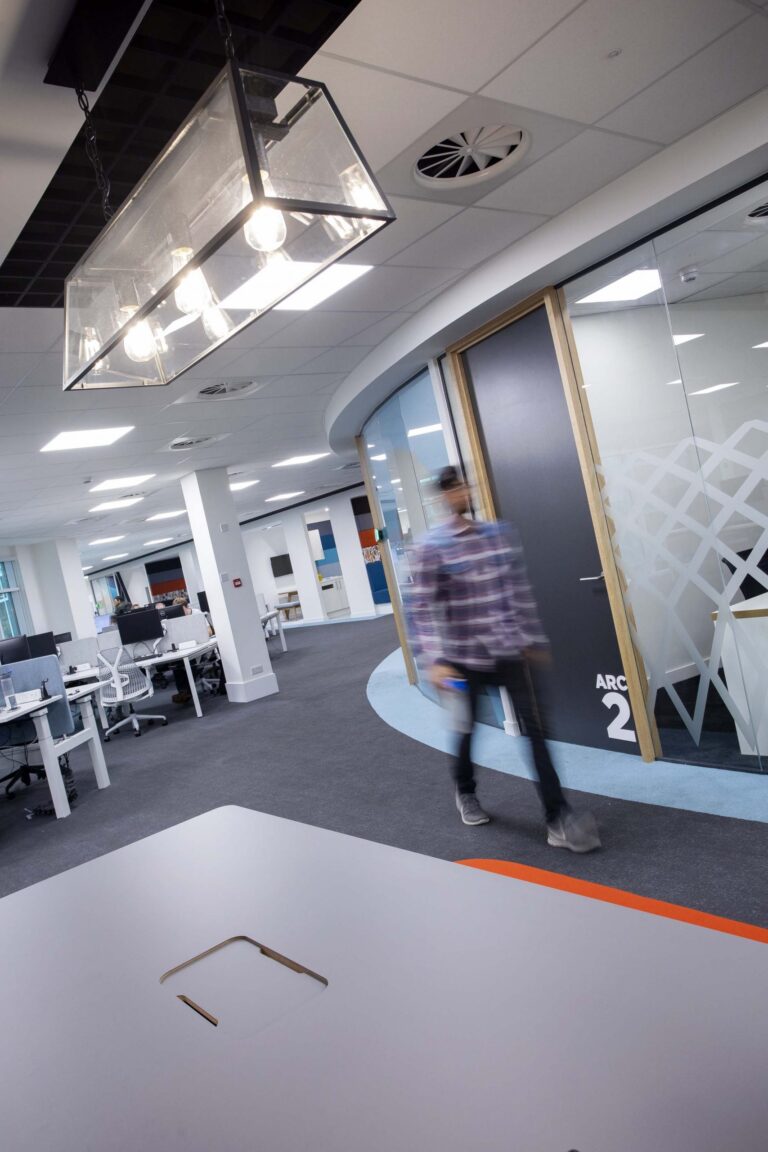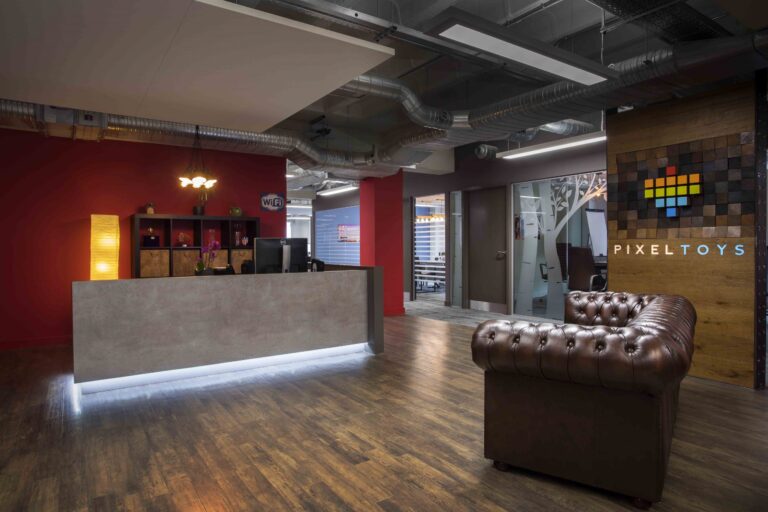
Gamification & Its Role in Organisational Change.
Date
29 July 2020
Read length
5 min
Gamification has made its way into the workplace lexicon and it is changing how business leaders approach organisational change and deliver more favourable business outcomes.
The majority of organisational change programmes fail – largely due to poor leadership and lack of employee engagement – which costs time and money and potentially damages market share and the chances of long-term business survival. In the face of greater economic instability (think Brexit) not to mention the continued and fast-paced evolution of technology, it is evident that managing and surviving change is a permanent challenge for businesses. It is because of these factors that gamification has become relevant as a powerful tool for HR leaders seeking to motivate, engage and inspire employees and deliver successful change programmes.
The concept of gamification uses game design and human psychology to re-imagine how employees are managed and motivated with instant gratification, feedback and rewards used as a way to promote and reinforce desired behaviours. Gamification is the idea of including game-design elements, such as badges, levels, leader boards, scores and challenges, in more non-game situations, such as the workplace.
The science behind gamification centres on two key truths – the first is that “playing games with high levels of engagement brings about an increase in knowledge retention” and the second is that, positive achievements release of dopamine in the brain, which gives the user a positive ‘rush’ and spurs them to keep striving to be more productive. Microsoft is said to have been one of the early adopters of gamification, turning the necessity of debugging its system into a contest to see which employee could find the most system flaws. Its power can be seen in other environments too. Fitbit has gamified health and fitness by allowing users to earn badges and rewards as they undertake physical activity, improve their fitness and compete with others.
Gamification can boost employee productivity and engagement – 95% of employees enjoy using gamified systems and 72% feel it inspires them to work harder. This shows people’s inate need to compete (with others and ourselves) and to feel part of something, but perhaps most importantly, that successful gamification is not just about financial reward. As payroll and HR services company ADP explains: “The best games offer a full menu of motivators suited to individual preferences, including financial rewards, opportunities to learn and gain confidence, recognition by others in the workplace, community-based rewards, competition and other incentives.”
Here are four ways that gamification can benefit your workforce and productivity:
1. Reinforce workplace culture and behaviours
Use the ethos of gamification to instil company values, show transparency and offer valuable real-time feedback. Instead of annual reviews where goals can be forgotten or become irrelevant, opt for more real-time measurable and meaningful targets that give employees a sense of achievement and accomplishment as they work. Gamification can also aid transparency and parity, using scores and rewards to ensure an even playing field amongst all staff and that all achievements are both tracked and recognised fairly.
2. Upskill the team
Gamification can be used as a means to encourage additional learning and new skills development, giving employees the chance to earn points or badges to add to their CVs and online personas. Deloitte is a great example and used gamification to motivate its senior executives to complete the in-house leadership training programme. Using leader boards, badges, and status symbols, Deloitte’s gamification spurred its learners to keep progressing, reduced the time spent training by 50% and increased its number of trained senior executives by almost 47%.
3. Deliver better customer outcomes
ERP solution provider SAP didn’t want sales representatives with insufficient product knowledge to hold the business back so used gamifications to help employees improve techniques, enhance knowledge and improve the customer experience. By developing a game based on real life scenarios where employees had to respond to customer questions correctly to earn badges and a place on a leader board, ERP made learning engaging and competitive and dramatically improved employee confidence and sales.
ERP solution provider SAP didn’t want sales representatives with insufficient product knowledge to hold the business back so used gamifications to help employees improve techniques, enhance knowledge and improve the customer experience. By developing a game based on real life scenarios where employees had to respond to customer questions correctly to earn badges and a place on a leader board, ERP made learning engaging and competitive and dramatically improved employee confidence and sales.
4. Drive engagement, motivation and enjoyment at work
– American based LiveOps, a contact centre company with a remote workforce, used gamification to rewards employees when they completed extra training, hit call time and quality targets and shared knowledge with their colleagues. Gamification improved morale, engagement, quality and enjoyment all in one. “…80% of LiveOps agents opted in and three quarters of them return on a bi-weekly basis. Participating agents outperformed their peers by 23% in average call handle time and boosted customer satisfaction by 9%.”
If you take the old motivation theory of the carrot and the stick, gamification is more about the carrot – but lots of smaller attainable carrots that makes the journey to the desired result one that can be pursued with fun and commitment in mind. In an age of multiple distractions and a skills shortage, business leaders need to recognise the value of employee commitment and motivation and ensure that rewards, recognition and feedback are in plentiful supply.
Whether using gamification to upskill the team, incentivise performance or engage them in a shared sense of challenge and endeavour, it will drive engagement, which is the holy grail of business. Today’s employees expect objectivity, progression, real-time feedback and a clear sense of purpose and gamification has the power to help organisations deliver on that and more.
A consultative approach.
As a society, we have a lot to learn from how we approach our own personal change journeys. Self-imposed change is often approached with trepidation, enthusiasm and excitement as we embark on lifestyle changes or begin a new job. In an age of business-critical and self-imposed change, the challenge of how to engender enthusiasm in the workforce rather than fear, or worse still apathy, is very real. At a time when employees expect consultation and co-creation, it’s no longer appropriate or wise to develop new work environments without soliciting their views and actively engaging them in the process.
Meeting this need for inclusion is best achieved by gauging employees’ views on every aspect of the workplace experience, from how they view the quality of the coffee to personal rewards, management styles, technological provision and working cultures. For workplaces to drive efficiency, productivity, morale and innovation, they must be coupled with great change management and behavioural and attitudinal transformation programmes.
Communicating in an informative and timely manner is very important, even for those aspects of a project that individuals can’t influence and control. Feeling ‘in the loop’ rather than ‘in the dark’ is helpful in its own right. In addition, creating the opportunity for various groups to contribute to and influence some aspect of change is empowering.
All businesses must strive to unlock greater productivity from their people if they are to compete in an increasingly competitive age. While culture might seem intangible, its benefits can be felt and seen in the everyday behaviours of employees and the contribution they make. For business leaders in pursuit of more, taking a closer look at what binds, unites and motivates their people is a very important first step.
See how we could help with your new office interior design or office design and build project here
Get in touch
We love nothing better than talking all things workplace and design – got a question, potential project or just need some guidance?
Drop us a note…




